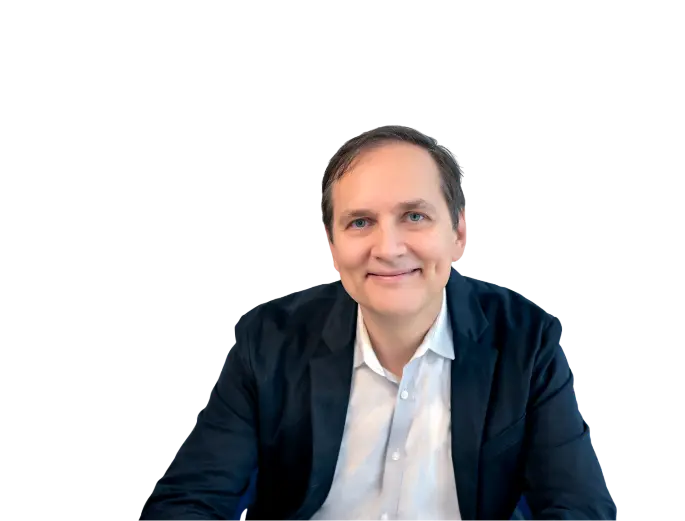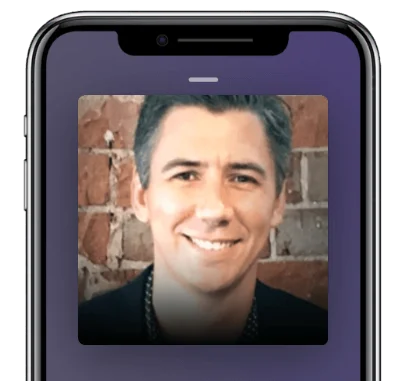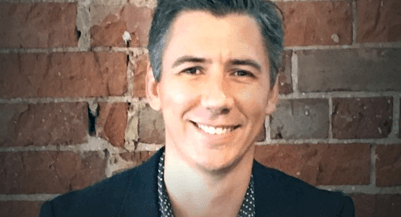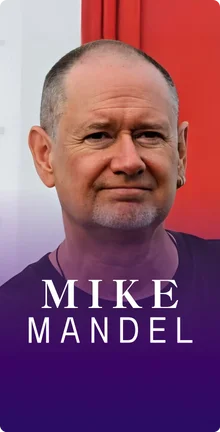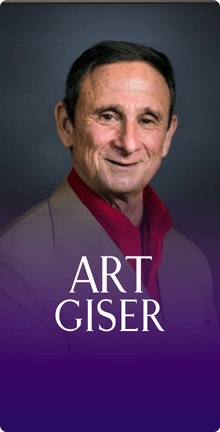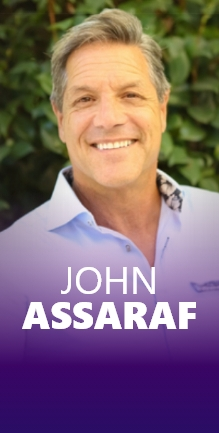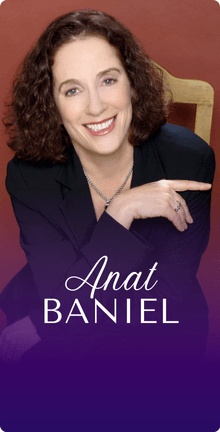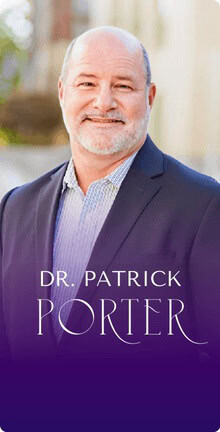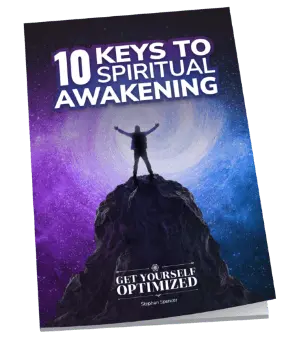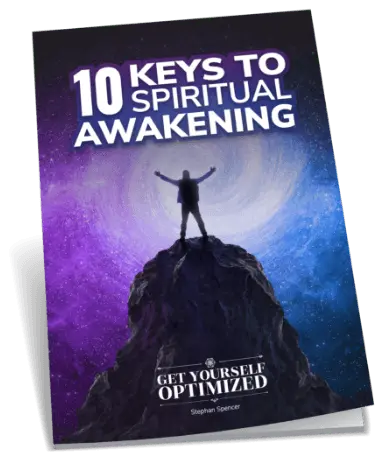In this Episode
- [03:03]Nick talks about mindset, explaining how his book, 7 Minute Mindset, came about. He shares that his fascination with how people’s minds work goes all the way back to his early teenage years.
- [07:04]When Nick had his epiphany at age 13, did he start writing down his goals? He answers, then talks about an example of a woman who set a goal of achieving $1 million a year in passive income.
- [13:16]Stephan talks about several of the strategies that Nick mentioned, then draws out the distinction that Nick made about when these techniques do (and don’t) work.
- [15:03]Nick reveals that he has two vision boards in his office, but explains that he uses them smartly. He then elaborates in some depth about what this means.
- [19:42]For listeners who aren’t familiar with the term, Nick explains what one’s reticular activating system is.
- [23:05]Nick has already mentioned one of the seven habits of failure (unrealistic expectations); what are the other six?
- [25:36]Stephan points out that there’s a third response besides fight and flight: freeze.
- [29:20]Stress inoculation is fantastic, Nick explains, and says he applies it in his own life as a form of personal challenge.
- [32:08]Stephan talks about the Pavlok device, which he says is a little too out-there for him.
- [33:56]We come back to the seven habits of FAILURE. F is for fear; we now learn that A is for attention displacement. Next, Nick explains that I is for indecision.
- [35:53]The L in FAILURE is for lack of action. The U is for unrealistic expectations.
- [39:44]R stands for repeating patterns.
- [42:01]E stands for external negative influences. It’s the only letter that relates to things that are outside of our own control or psychology.
- [43:40]Nick discusses the ways in which failure can be a gift if you choose to take it as one.
- [47:29]Part of the opportunity in Nick’s challenge is that it makes you aware of unconscious resistances that you have, Stephan points out.
- [49:07]Nick provides another example involving a recent client.
- [51:52]Briefly, Nick covers the seven factors of success. The letters of SUCCESS stand for strategic planning, unlearning, consistent action, comfort rezoning, entrepreneurial thinking, selective focus, and self-belief.
- [55:25]Nick offers recommendations on how to learn more about him and his programs.
I’m really excited with this episode, welcome to the show, Nick.
Hi, Stephan! It’s great to be here.
We had a really fun episode over my other show, Marketing Speak. We were talking about how to do sales calls in a way that wasn’t icky and was so powerful and didn’t get you the kind of rejection that you typically get with sales calls. I just want to make a plug for that episode for anybody who is listening to this episode and they’re thinking, “Well, I need to be better at doing cold calling.” Your technique, Nick, is amazing. It’s a paradigm shift and it becomes less about trying to sell somebody and more about adding value in a way that it’s just disarming and helpful, value-added. I love it. It’s so cool. That is episode number 87 on Marketing Speak. Nick, let’s talk about mindset because you have a book, The Seven Minute Mindset. There are traps that people fall into and I’d love to hear what those traps are and how to fall out of those traps.
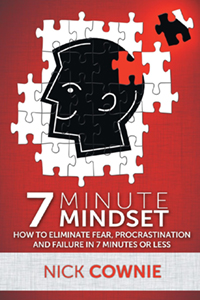
The Seven Minute Mindset is a book that came about because I’ve been teaching NLP for, it must have been five or six years at that point. I’ve been teaching it for a decade now and at the time that I wrote the book, I was not particularly impressed with a lot of what I’d seen in the industry. I spent 12 months as the marketing director for the Australian board of NLP. I got to meet and get to know everyone in Australia who is at the highest levels of NLP teaching. They’re all very lovely people as you’d probably expect from the people running the biggest NLP schools in the country but they weren’t very up to date on current methods of teaching and using the internet and they’re pretty behind in their marketing approach. I tried to bring all that into the future. One of the big issues that I had with the way NLP was taught was it was very much someone would learn from their teacher and then pass on, almost word for word, exactly what they’ve been taught. I’ve never been a great route learner and I’m not a huge fan of just regurgitating the same information that I’ve received from other people, so I decided to take a bit of a strategic approach to all of the content that I’ve learned with NLP and actually go out in the real world and test it with myself and other people to see if I could get the same results with the techniques that I’ve been taught but in a much shorter time frame.
One of the big issues that I had when teaching the techniques and when working with people one on one. I had a clinical practice. At the time, I was also a traditional Chinese medicine practitioner specializing in acupuncture. I had the unique position of being able to teach NLP and also treat hundreds of people in a one-on-one practice-based setting. I found that the techniques were just taking a little bit too long. My opinion was that they were full of life. I said about trying to trim the fact from the techniques and testing then in my own practice. The result of that is really what ended up in the book. That’s one of the main things that came out of writing the book. As an interesting, I guess you could call it a side project for the majority of my life, from around about age 13, I became just absolutely fascinated with why most people fail miserably to achieve the goals they set themselves in their lives and only a few or a handful consistently achieve success. My definition of failure that I arrived at as a 13-year-old was very simply not achieving the goals that you set for yourself. Over the next probably decade to decade and a half, I did a very informal study. No double-blind placebo-controlled trials or anything like that, just talking to people, interviewing people, working with people one-on-one when I ended up in the clinic. I was really looking for is there an underlying theme here or an underlying set of beliefs or habits or practices that cause some people to be wildly successful and other people to fail miserably and I believe I cracked it. That’s what I put in the book. I think it’s probably going to be really fun to go through a bit of that in some details today.
That would be awesome. I’m just curious before we do that, as a 13-year-old when you had this epiphany, did you decide that you’re going to start writing down your goals? Because that’s one thing that I’ve heard as a differentiator from people who achieved their goals and people who don’t achieve their goals is that the people who do achieve them write them down and then they refer back to them.
I did start writing them down, yeah. I tend to make fun a little bit of the common goal-setting methods these days and I’ll talk a little bit more why I did that later but they all work. The direct answer to your question is yes I did start writing my goals down and I learned all of the different goal-setting systems that I could find over the next 10 years or so. Everyone’s probably seen The Secret by now so I had a vision board and I was calling on the universe to attract whatever I wanted into my life pretty unsuccessfully. I tried other approaches like writing my goals out long-form by hand multiple times a day in the morning and the night time. That’s supposed to burn it into your subconscious mind as your chief desire. That didn’t work for me either. The other approach I tried was to read it with conviction to myself in the mirror every morning, read my goals. That didn’t work me either. What I found is that any of these goal-setting approaches would probably work just fine if they weren’t missing the missing ingredient. This is actually something that I teach now in my NLP trainings. I still teach NLP now. We teach it 100% live online. My wife Alex, who I know yourself and Orion knows quite well. Alex and I teach this together. We’ve kind of changed the focus away from traditional NLP onto what we call extreme personal improvement, which is how to become the person for whom the achievement of your goals is a natural side effect of who you are, what you do, and how you show up in the world. That’s my goal-setting approach that I, unconsciously, this is what I stumbled upon at age 13.
Well, the epiphany probably happened later but when I first started writing the goals down and I tried all of these other systems and found they didn’t work, I arrived at the conclusion that if I stop trying so hard and simply became the person for whom that goal would naturally and spontaneously be achieved, then I didn’t have to put in all of the effort and the trial and error and the struggles in order to achieve it. That’s a really interesting concept to me and this is something that I have been teaching my clients over the last few years is if you think about any goal that you want to achieve in your life, there is a type of person for whom that goal would be an absolute no brainer and no effort required, just easy flow in their life. Finances are really common goal that people set. I was on a consultation actually doing my phone sales process that we talked about previously with a lady about two weeks ago who was telling me that her big goal was to make $1 million a year in passive income.

Because, of course, we don’t want to be active.
No, that wouldn’t do anything for you if you want passive income. But this is a goal I typically hear from people who aren’t making money at the moment. She definitely fills in that category. She was making $2,000 to $4,000 a month which is a very small amount of money to try and live on and it’s usually the people in that position who want to make a million or more and they wanted to do it passively. Whereas in reality if her goal was to make $10,000 a month in either active or passive income, that would be a totally life-changing amount of money for that lady. But still, even $1 million a year in passive income, for her to go from $4,000 a month to $1 million a year, which is just under $84,000 a month, that’s an $80,000 a month gap that she’d need to bridge. The personal development required to bridge that gap between $4,000 a month and $84,000 a month is phenomenal. It’s not super easy for most people to just make that jump. There are so many steps along the way.
That seems like an unattainable goal.
It really does, doesn’t it? Unless she wins the lottery, which I know is a lot of people’s strategy and they’re still going to be sitting there with their fingers crossed while we’re drinking cocktails on the beach or something. This lady had a goal, $1 million a year, maybe it is achievable but the point I’m trying to make is that she would have to work and grind and hustle like crazy probably for years, if not decades, in order to achieve that whereas there is someone out there for whom $1 million wouldn’t even be sniffed at. Imagine if someone told Bill Gates that their goal is $1 million a year. If he left $1 million on the sidewalk, it probably wouldn’t be worth his time to turn around and pick it up. Do you know what I mean?
Yes.
For him, it is now a natural side effect of who he is, what he does, and how he shows up in the world to create massively abundant wealth at that level. Whilst this is a bit of an extreme example, I found the concept to be true in every area of life. If you can identify who you’d need to become in yourself so that the goals that you want would naturally come to you, I’m not talking law of attraction, I just mean how do you live and structure your life and the way that you live, the actions that you take, what do you need to resolve or accept about yourself or release so that you are the person for whom what you want just kind of naturally falls in your lap and then the work is to become that person, what typically happens in every case where I’ve seen someone actually put the effort in is they start to effortlessly achieve what they want. It’s certainly been true in my life. I’ve got countless examples of it and it continues to be true today. That’s a long essay to a short question about did I write my goals down but like I mentioned previously, I tend to think things a little bit differently than most people do in this space.
Yeah, you mentioned a few different strategies that I actually think work; vision boards, goal writing, and reading your affirmations or goals in the mirror. You made that crucial distinction that if you are not congruent with the identity that you set up for yourself of the kind of person who sets those goals and achieves them, then you’re creating an incongruency there, a double buy-in, and you won’t actually achieve it. Whereas people who do get success out of vision boarding, and there are plenty of them out there. I have a whole episode covering vision boarding with Renée Piane, episode 40, which is great. She’s manifested amazing things in her life that are beyond coincidence. On her vision board, she had a picture of her husband who she visualized would be her husband and the guy that is now her husband and she’s over the moon happy and the relationship looks exactly like the picture that she had cut out of a newspaper or a magazine. This is my man and she manifested and the same thing with the dog that she wanted. It’s just uncanny. I know it can work but I do believe that you’re onto something that if you set up these incongruencies where you don’t really believe it, deep down your unconscious is going against your conscious decision making, you’re creating resistance for yourself, you aren’t going to achieve those things.
Having a vision board is fantastic but taking action on those goals is also really important.
Absolutely, I’ve got a bit of a playful attitude. I like to tear into vision boards, I have two vision boards here in my office here right now. My wife and I actually still use them but we use them smartly, we use them without relying on them to magically deliver the result and that’s where I see things like the DVD, The Secret, kind of falling down it set a lot of people up with one of the seven habits of failure that we’ll probably get into that I found when writing my book, which is Unrealistic Expectations. The great thing about vision boards is that they are very good for the vision. That the word vision in and of itself doesn’t actually include action. I think having a vision board is fantastic but taking action on those goals is also really important. The vision board does very much serve to program the RAS, The Reticular Activating System, to selectively focus your attention on the things that you want and that’s fantastic. There’s a lot of examples of people who selectively focus their attention on the things that they want and they don’t take any action. I’m a big fan of actually taking the action to eliminate the issues that come up when you set a goal. One of the big things that happen, no matter if you’re writing down smart goals, if you’re reading affirmations yourself, if you’re using a vision board, in my system, all three and probably every other approach to goal setting all serves two crucial points.
One is to point you in the right direction so that you actually have something to aim for. The other one, this is even more important if you are going to become the person for whom the achievement of what you want is a natural side effect of who you are, the gap between who you are now and who you need to be is paved with limitations and roadblocks with all the subconscious stuff that you need to resolve in order to go from who you are to who you need to be. We actually still tell people to use a vision board, I like to rip it in for a marketing point of view because it’s fun and it’s a pretty smart idea as you know to polarize your audience. We catch people’s attention by doing that. The reality of it is that when you use the vision board and you decide for example I want to have this fantastic body and this great relationship and this type of dog and this car and whatever else you put on the vision board. It serves the purpose of bringing up all of the subconscious stuff that will get in the way of its achievement. If when you’re looking at the car that you want, for example, the thought pops into your mind, who am I to want a $250,000 Tesla.
Unless you do something about that self-perception, having the picture on the picture board isn’t going to bring the Tesla into your life. However, when it triggers those subconscious limitations that you may now have been consciously aware of beforehand, then the vision board has done its job. It’s pointed you at the right direction, it’s brought up the subconscious stuff. And then if you have a toolkit that you can dig into to allow yourself to resolve the underlying issues that are going to slow you down, hold your back, get in your way, and stop you from actually achieving that. You get that stuff out of the way then you do become the person for whom the Tesla can, in some cases just kind of magically appear in your life. That’s how I see goal-setting systems and vision boards.
There’s a lot of examples of people who selectively focus their attention on the things that they want and they don’t take any action. Share on XYeah, that makes a lot of sense. That resonates for me, I think that either you kick up resistance in your path and it becomes incongruent for you to achieve that goal or you’re using these tools like vision boards, affirmations as a reminder or trigger on your path and you don’t have resistance in the way and you believe that is possible and that this is part of your destiny. Life happens for you, not to you, and it’s with a lot of ease and flow. That’s amazing when that happens and then things seem to conspire. The universe seems to conspire to make your vision a reality, like you said with The Reticular Activating System being finally tuned for the things that are going to get you to your goal. You want to actually take a moment to describe a bit more about The Reticular Activating Systems for our listeners that are not familiar with it.
Sure. This is part of your brain that effectively serves to narrow your focus. If you’ve ever had the experience where you thought about buying a new car, for example. A couple of years ago, my wife and I decided that we wanted to upgrade our car, get a brand new, I think we got a little sporty black Mazda 3 from memory, when they were brand new, really nice car. I’m not a car guy so I don’t really notice different types of cars that drive around. I like them for their functional value more than how fancy they are. But for some reason, this car just caught my eye and I liked it. We went to check it out at the car yard and on the way home which was probably half an hour drive, I think I must’ve seen 50 of these cars. This is the kind of thing that happens very, very commonly. Once you prime your Reticular Activating System which is the part of your mind that determines what shows up in your consciousness, what you become aware of. Every second we have access to the entire spectrum of sensory-perceptual information, or in other words, everything that’s out there is possible for you to perceive and notice but there’s so much that we need to focus our attention on specific things or we’re going to be intensely overwhelmed. I think of the Reticular Activating System kind of like the search engine in your mind.
You’d know much more about this than I would, Stephan, so excuse me if I butcher this analogy but let’s say we go to Google and we start typing in keywords and I type in, we use the same analogy. I type in Mazda 3, a type of car. There’s no way that brands of dog food are going to show up on the screen in the search results, alright? Unless someone’s got their ad targeting very, very off. There’s just no way it’s going to show up in the search results. We type in a keyword, the relevant results show up on the screen. The same thing happens with the Reticular Activating System in our mind by what we focus on, what we repeat to ourselves, what we choose to hold in our mind. That’s the keywords that we are entering into the search engine in our mind, then the relevant results show up through a process of filtering known as deletion, distortion, and generalization where everything that’s not that thing is filtered out and we become much more aware of the specific thing that we are paying attention to. That’s why when I went and had a really good look through and a test drive of this specific type of car, when I got back into my own car and drive home, all of a sudden, I was seeing this car everywhere because I prompt my subconscious mind with the simple command, “Hey, this is important to me, pay attention to this car from now on.” That’s a natural function of our mind and it’s something that people attempt to, I was going to say manipulate but it’s not really the world to capitalize on.
Leverage.
Yeah, leverage. Great word. Through things like vision boards and affirmations and stuff like that.
Yup, makes a lot of sense. You alluded to the seven habits of failure and you gave us one which was unrealistic expectations. I’d love to hear what the rest of those seven habits are.
There are seven habits that predictably lead to failure and seven habits that predictably lead to success.
Great! I studied probably close to 1,000 people when writing my book Seven Minute Mindset. I found there are seven habits that predictably lead to failure and seven habits that predictably lead to success. I wordsmith them a little bit to get into an acronym for the words failure and success because both of those words are quite comfortably familiar, you have seven letters so it’s fantastic also from a marketing and training point of view. I really like acronyms because acronyms allow things to be easily remembered. When it’s easy to remember, it’s easy to apply. When it’s easy to apply, it’s easy to get results. The seven habits of failure, each letter in the word failure represents one of the habits. The first one, F, is fear. People who consistently fail to achieve the results that they want for themselves, and remember that’s my definition of failure. You don’t have to be laying in the gutter with a needle out of your arm. My definition of failure is simply to not achieve the goal that you set for yourself. The first habit is fear. I actually considered writing an entire book on fear because it’s such a huge topic. Fear is a natural indoor response that is very difficult to turn off and we probably don’t want to because the purpose of fear is to keep us alive.
We go back to the caveman days and a lot of people may probably heard this kind of analogy so I won’t take too long on this one. If you’re out there gathering and foraging for berries in a field and a sabretooth tiger walks around the corner, for one, your Reticular Activating System is going to pick that up because you have programmed it to look for big scary sabretooth monsters that want to eat you and your family. It will start going crazy. You’ll notice you get the tingles at the back of your neck. If you then lookup with no fear and say to yourself that’s a fascinating creature as it comes bounding towards you, you are lunch. The fear serves to keep us alive, what actually happens is we go into the fight or flight response, we get a massive dump of adrenaline, our pupils dilate, the peripheral blood is shunted to the thoracic abdominal cavity to protect your internal organs and all this kind of stuff happens, the typical fight or flight that most people who have probably experienced at some point in their lives and then you either pick up your spear and try to fight off the sabretooth tiger or you run for your life and hope you can outrun the sabretooth tiger.
In fact, there’s this thing that I heard recently. Not too recently but say 5 years. There’s actually a third response besides fight or flight, there’s also freeze. That’s what a deer would do, it would freeze so you didn’t notice it, the prey just blends into the forest when it’s freezing but our brains can also get us into a freeze mode as well as a coping mechanism when we are in fear.
Absolutely, it’s very interesting. In the modern world, there are not that many situations that we would need to fight or flee from. I find these days the freeze response is much more common. Actually, I can’t say that it was in the past because as far as I know, I wasn’t around when sabretooth tigers were hunting people, hiding in the bush. I’m sure there are a lot of people who froze under those circumstances. But these days, I definitely find that this freeze response is pretty common as well because there’s not a lot of in our general daily lives, in a civilized western country, there’s not a lot of opportunities to fight luckily and not many situations that we need to flee from. If there is a mild scare or something along those lines, we’ll just freeze and watch. That’s a whole other topic, by standard effects and stuff like that in violent situations. But the fear is looking at the sabretooth tiger concept, there are none around anymore. There just aren’t these huge carnivorous creatures wandering around, looking to eat us as we wander down to whole foods, for example.
We still have this natural inbuilt response to fear and it gets triggered in response to things that shouldn’t actually trigger it.
Which is where we do our hunting and gathering these days. We don’t really need the same fear response that we had when we were not top of the food chain. But we still have this natural inbuilt response to fear and it gets triggered in response to things that shouldn’t actually trigger it, a very simple one that a lot of guys can probably identify with, maybe a lot of women as well, is seeing someone attractive in a café. If you’re single and you decide to walk up and start a conversation. I used to run seminars, in a live seminar room where I had 100 people and I’d ask them if you saw someone who you felt was ridiculously attractive over in the corner, how many of you, if you’re being completely honest with yourself, would be totally confident to walk over and start a conversation with that person? Out of 100 people, maybe 2 or 3 guys would put their hand up. If I pressed, some of them would admit that they were just kind of having some bravado and they wouldn’t really do it. We’re looking at 1 or 2 out of 100 people who wouldn’t suffer from that fear response at that moment. If you’re having a fear response in relation to anything in your life and you allow it to continue, you’re just not going to take the action that you need to take, that’s why fear is the number one habit of failure.
Just before we move on, this idea of not being confident enough to go up and talk to a really attractive person, that’s approach anxiety, I guess. In the pickup world, this is what they would refer to it as. The way that people overcome that is through repetition and through stress inoculation, being kind of forced to do it to the point where you kind of become numb to it. But there’s an evolutionary reason why we have him approach anxiety, right?
Absolutely, yeah. Stress inoculation is fantastic. I really like stress inoculation. I don’t prescribe it a lot to clients and students but in my own life, I employ stress inoculation as a full move personal challenge. I actually keep a journal of things that scare me. There’s not a lot of stuff in that anymore because I would deliberately go out of my way to face those fears. These days, it’s reached the point where it doesn’t have to be because there’s really not many things that I’m actually afraid of anymore. Now, it would be anything that I have resistance to. I had to adapt my definition for the challenge for myself because I started running out of fearful situations. Anything that I find resistance to, I will inoculate myself against by forcing myself to do it. Even though I have the mindset skills to do some mind voodoo on myself and change the way I’m perceiving it and all those kind of things. I still think there’s a lot of value in what I call outside-in change. I like to keep things very, very simple. There’s a lot of confusing terminology in the personal improvement, personal development world, and specifically in NLP. I try to break things down and keep it really simple. There are really only two ways that people change. One is outside in which is behavior first.
Notice that you were able to act in a different than you have previously, and allow your internal systems to update in response to that, or inside out where you make the internal change first by doing something like releasing fear or changing a belief and then noticing how that shows up in changed behavior. I encourage my students to employ both of those. I typically teach the inside out approach because that’s what people come to me for. But in my own life, I employ a combination of both. If I find that I’m resistant to something. I’ll have strange thoughts pop in my mind like I’ll hear a song when I’m shopping with my children and I think that’s a cool song and then a little voice at the back of my head will say something like, you should dance right now. If I’m pushing a shopping trolley down the aisle on the local supermarket, that thought would trigger another thought which was no, that will be embarrassing or people will judge me, something along those lines at which point I give myself no choice but to do it. What I invariably find is that, A, I have fun, B, no one cares because they’re far too concerned about what they would like if they were doing something like that and C, some people come and join in. Having that kind of adventurous spirit is actually infectious. It’s really worthwhile to make those outside in behavioral changes first in specific circumstances which is pretty interesting.
Yeah, there’s a device that will help you with that outside in approach. It’s called the Pavlok and it gives you a shock when you’re trying to quit a bad habit and you shock yourself with this Pavlok device on your wrist every time that you partake in that bad habit so you associate that habit with pain. It’s not that different from having a rubber band around your wrist but it’s apparently more effective because the rubber band doesn’t hurt like an electric shock does.
That’s fantastic.
Yeah, pretty crazy. Pretty crazy, actually. I was just talking to a guy at the Podcast Movement Conference. He was on my other show on Marketing Speak, Daniel J. Luis. He has one and that’s how he wakes up in the morning, first it vibrates. If he doesn’t wake up when it vibrates, then a minute or two minutes later it gives him a shock. He willingly opts in for that like “Yep, I’m willing to get shocked every morning.” Usually, he wakes up with the vibration, a Fitbit would do the vibration as well. You could use that to wake up in the morning and not affect your spouse’s sleep. Having an alarm that goes off that wakes your spouse up too, that might not be such a great thing, but this Pavlok thing is a little out there for me, I don’t know. I’m not going to go buy one of these, but it was pretty fascinating to hear about it.
Yeah, it’s a pretty interesting looking device. I haven’t tried one either but I have to admit I’m pretty curious. I’ll probably give it a shot at some point.
Okay, let’s come back to the seven habits of failure. We did F for fear. Was there anything else you want to cover on that before we go through the rest of the seven?
A huge habit of successful people is the ability to confidently make decisions even in the lack of having all the information.
No, I think that’s good. We’ve covered fear. A is attention displacement. Displacement is a word that I learned from a chiropractor way back when I was an acupuncturist. Essentially, displacement means something is not in the right place. They use it in relation to vertebrae in your spine like vertebral displacement. I use it in relation to attention as a fancy way of talking about things like procrastination and allowing yourself to focus on the wrong things. Attention displacement is focusing on the wrong things at the wrong time. What’s a very easy example? In the context of our other conversation on Marketing Speak, you need to make sales calls but instead, you procrastinate and you check Facebook, which is not going to get the result that you need, right? That’s putting your attention in the wrong place. That one is pretty self-explanatory, I don’t think we need to spend a lot of time on that one so we can move on. Fear is the really big one so the rest of these are really easy to understand. I is indecision. A huge habit of successful people is the ability to confidently make decisions even in the lack of having all the information.
You know they say that leaders make decisions quickly and change their minds slowly or they make up their mind quickly and change their mind slowly.
Yeah, and fondly enough it’s exactly the point I was about to make which is great. What I’ve seen with people who have indecision as a habit of failure that shows up in their life is they will question themselves and take a long time to make a decision. Once they finally arrived at a decision, they are prone to change their mind quickly. It’s the total opposite pattern of people who are in a leadership position and learn how to effectively make decisions. That’s I, Indecision. Next, we have L, which is lack of action. Very closely related to indecision but they can appear indecently in someone who’s struggling to achieve their goals. Lack of action is probably the easiest one to understand if you set a goal that requires action and then you don’t take that action, your likelihood of achieving the goal drops to zero really fast. For people who haven’t wrapped their heads around that already, the analogy that I like to use is you’re going to the gym with the intention of building a great body. You put the weights on the bar. You stand there and you look at the bar, then you go home. If you don’t lift that weight even one time, nothing is going to change about your body. That’s lack of action. Interestingly enough, that flows into the letter U, which is unrealistic expectations.
We already talked a little bit about The Secret. This is usually where I kind of rift on the secret a little bit. As I mentioned, we do use vision boards but for the specific purpose of guiding our focus, programming the RAS, and then allowing that to trigger whatever results subconscious stuff is in the way of the achievement of the goal, for me that’s the purpose. I really enjoyed the movie The Secret. What I found was a huge issue with that movie is it goes for about 3 hours and Dr. Joe Vitale is the only person in that entire movie who uses the word “action” at all. There’s one point, probably three quarters away through the movie, where they cut to a scene of Joe sitting on a stool and the scene takes about three seconds and word for word he says, “You have to take some action” and then they cut again. It’s in there where he says that one line, you have to take some action. I think they probably put it in there as a caveat so that if someone criticizes The Secret, they can say well, we did tell people that you need to take action because focusing solely on the law of attraction without taking any action in your own life to magically bring to you what you want is a full [00:37:56] for most people. There are people who have already, this is the specific circumstances in which it will work. If you have already released all of the subconscious stuff that will stop you from achieving the goal, and then you focus on what you want, the likelihood that it will just appear in your life is actually relatively high, but the number of people for whom that is a reality is ridiculously low. If you don’t actively take some action, just focusing on what you want is setting up unrealistic expectations. That’s one type of unrealistic expectation. The other one is the jump is too big. The gap is too big. This is like the lady I mentioned previously who is making $4,000 a month and wants to make $84,000 a month and she wants to do that within a 12 month period.
If you don’t actively take some action, just focusing on what you want is setting up unrealistic expectations.
Passively.
It’s possible but it’s very unrealistic. Then, what happens is we fail to achieve the unrealistic expectation which is what should’ve been expected anyway. This is what I find really interesting, instead of blaming the system and saying I learned the wrong way or perhaps I didn’t take action or I haven’t taken the time and energy to learn an effective way of doing this, instead of taking responsibility and saying perhaps I should’ve set a more achievable goal or I could’ve done XYZ better, the people who are in this loop beat themselves up and say “I’m no good.” “I don’t deserve it.” “I can never achieve it.” I don’t deserve it, that’s why I’m not making $84,000 a month and it just serves to reinforce the limitations that are going to make it impossible for them to ever bridge that gap. That’s unrealistic expectations. R stands for repeating patterns. This is anything that happens on a mental, emotional, or physical level over and over again. That could slow you down, hold you back, get in your way, or stop you from achieving the goal. That one I also find pretty self-explanatory. For some people, it could be when they get close to achieving success, all of a sudden they catch a cold and then they have to stop working for two weeks. When they get back, they have a new idea or they’ve changed their mind or they don’t have the confidence anymore or whatever it happens to be, or the opportunity has passed them by.
These can show up physically. It could be emotionally that maybe every time they get close to achieving success, they go through some kind of emotional turmoil or their relationships start to suffer. I had a client in the last round of what we call EPIC NLP, so EPIC is Extreme Personal Improvement Challenge. That’s our live online NLP training. We had a client going through that training who has an epic goal, we get everyone to set a goal at the start of the training. Her goal was to go from being effectively a non-runner to running a five or six-kilometer fun run with a group of friends within two months and just as she’d been training really hard and going really well and just she was about a week or two weeks away from achieving it, she injured her ankle two weeks away. That started to improve, one week away she got a cold, like a really strong flu, and recovered the day before she was due to do the run, so she didn’t end up effectively completing the run, which is really interesting, still got a lot of benefit to add up going through the personal development process and it just means that she has a little bit more work to do before she can achieve that epic goal. But it’s really interesting when we started digging in that we found that this is a pattern that repeats over and over again in her life when she’s just about to achieve the goal, she’ll either injure herself or she’ll get sick.
Wow! That must have been a huge epiphany for her if she wasn’t aware of that before.
Yeah, it really was. We’ve been working with her to resolve that because it’s, in my opinion, totally fixable. Then E, this is something I find really interesting as well, E stands for external negative influences. This is anything outside of you or outside of your control that could impact your ability to achieve your goal. If we look at the word failure with its seven letters, only one of these letters, which is the final one, relates to things that are external to us or outside of our control or our own psychology. We got fear, attention displacement, indecision, lack of action, unrealistic expectations, and repeating patterns. Those six are all internal and E, external negatives, is external. If we have a tug of war with six people on one side of the rope and one on the other, the six are going to win every single time. This is just a simple way of understanding that unless you fix what’s happening inside yourself on the subconscious level of mental and emotional level, unless you get that stuff sorted out, you’re going to continue to self-sabotage and fail in achieving your goal. That’s the seven habits of failure.
Wow! That’s great. I like how you define failure as just not achieving your goal, it’s such a loaded word for most people. They take it on as part of their identity and it triggers shame and all sorts of negative judgment and so forth. Failure is just information. It’s like okay, well that didn’t work. I’m not a lesser person because I “failed.” It’s just that goal was not achieved, big deal, I move on and try something else.
Exactly! Like you’re saying, it’s just information. What information is it providing? It’s a fantastic gift if you choose to receive it as such. It’s going to show you exactly what you need to change next time in order to achieve that goal. We have a framework that we teach in the Extreme Personal Improvement Challenge that I call the pendulum effect. If you can imagine a pendulum hanging perfectly still perpendicular and if it were possible to pull it out until it’s 90 degrees so you’re holding the string toward out to the side, and we’ll call that, let’s say from the neutral position which is 0 to that point where you’re pulling it right out to the side, that’s a plus 10. That is the size of your goal. You can set a goal that takes you to a 5 or a 6 or a 7 but most people want 10 out of 10 goals. They’re big and exciting and motivating. What happens when you release the pendulum is it swings to the equal and opposite position on the other side of neutral. If you set a goal that’s a level 10 out of 10 goals for you, what’s on the opposite side of a goal is a challenge. It will swing to the opposite end of the spectrum and present to you an equal and opposite principle of physics, right?
If you set a goal that’s a level 10 out of 10 goals for you, what’s on the opposite side of a goal is a challenge.
An equal and opposite challenge at the same level of the goal that you’ve set. That in and of itself is in one way a huge pain in the backside because it happens consistently but it’s also a real gift. The challenge comes in the form of a 10 out of 10 challenge. The story that we just told, the lady doing the fun run, let’s say that was a 6 out of 10 goals for her. She specifically chose the goal, she’s a very successful businesswoman here in Australia, a famous internet marketer, excellent business coach, and she actively chose not to focus on business so that she could learn the tools in another area of her life and prove that she could implement them so that when she comes back to business, she’ll have this toolset and then she can apply it to business knowing that it is cross contextual. She chose running, she set the goal and that said 6 out of 10. Then when you let the pendulum go, it will swing over to the challenged side and it hits 6 out of 10 which for her was injuring her ankle and having a cold that only improved the day before the run. What happens in those circumstances is either you choose to give in to the challenge or you realize that it’s giving you all the information on what you need to eliminate or overcome or change about yourself in order to be able to handle the challenge. As the pendulum swings from 1, 2, 3, 4, 5, right up to 6 or maybe even 10 for you, it’s going to bring all of the subconscious stuff that’s going to get in the way, the fears, the doubts, the worry, the negative self-talk, the beliefs, all of this stuff that you need to resolve. I highly recommend that you write as much of that down as you can, you don’t want to lose that as it comes up. It will be very obvious when it happens because you’d be saying to yourself things like this always happens to me. Even the tiny little sentence like that, here we go again. There’s so much underneath that, that if you can resolve what is causing you to say that, then it has no need to show up in your life anymore. This lady, even though she didn’t reach her goal at the level that she wanted, was presented with a fantastic gift by injuring her ankle and becoming sick because now, she has the opportunity to resolve that stuff and it will potentially never be a problem for her ever again. It’s really, really interesting.
Part of the opportunity in this challenge is the awareness that you even have this resistance that you kick up unconsciously into your path. The fact that she was unaware of that until she went through this exercise and then she had that epiphany, “I set myself up for this, getting sick, getting injured, I do this a lot in my life.”
Absolutely.
Yeah, a big paradigm shift. The pendulum effect says that if she had set a huge goal, a 10 out of 10 goals like run a marathon, then she would have been met with a much greater challenge than just injuring her ankle. She might have broken her foot or had gotten in an accident or something.
The reality is that it is impossible to know what the challenge is going to be. What I’ve found is you could be 100% correct or the challenge may have shown up in a different area of life. It could’ve been that there were problems in her relationship at a 10 out of 10 levels or it could be, this is not a hard and fast rule, it could be 2 5 out of 10 challenges. Maybe she would have still had the ankle injury without breaking it and the cold and then some huge argument with her husband or a crisis at work or something along those lines. Here’s another great example, one of our other clients who just went through the last round of EPIC runs a dance studio and had the goal to bring on another 100 students into her dance studio, which is a pretty fantastic number, in the 10 weeks that the program runs for. When we teach our program, we teach it live online using Zoom, the awesome webinar conferencing system. We teach for three hours at a time, small chunks so it’s easy to learn. Then after the three hours, I hang around for as long as possible to answer everyone’s questions. I won’t leave until everyone’s questions are finished, sometimes it takes 10 minutes, sometimes it takes another 2 hours and that’s cool because I really love it and so we hangout to make sure that happens.
At one point, this lady was telling us that she was getting close to achieving her goal and then out of nowhere, I believe she’s using Stripe for her payment processing and something happened where her entire month’s worth of student fees failed to process for no obvious reason at all. No one had touched anything in the system, no one clicked the wrong button and it had been working for years and as she gets very close to the number of students that she wants, all of a sudden the income doesn’t come in that month and there’s some kind of technical issue with Stripe. You could call that a coincidence and it probably is but I would also call it for her that’s a 10 out of 10 goals, I’d call that a 10 out of 10 challenge even though it’s a coincidence that she needs to overcome because if she can’t process students, she can’t pay herself, she can’t pay her staff, can’t pay for marketing, not going to hit the goal. The other thing is it brings to her awareness that there is a vulnerability in her system that needs to be fixed so that’s never a problem again. It’s a gift to her because she now knows that she needs to fix that problem in order to be able to welcome the extra 100 students into her studio, it’s always a challenge and generally, at the moment, it sucks and it’s not a lot of fun. But if you face the challenge and you overcome it, you are significantly better off from that point on.
Yeah. That makes sense. We got the seven habits of failure. We really don’t have time to go into the seven habits of success. What do you call it? Is it the seven habits of success or did you word it differently?
Yeah, it can be called seven habits of success. Sometimes, I call it the seven success factors as long as it got the number seven and the word success in there. I can cover it in two minutes really briefly if you like, if anyone is particularly interested.
Yeah, let’s do it.
I just won’t go in a lot of detail. Again, this is an acronym. The first S stands for strategic planning. People who consistently achieve success don’t only set the goal but they create a strategic plan often working backward and reverse engineering from where they want to be back to where they are and then they work that plan. U stands for unlearning. This is effectively getting rid of everything that’s come up when you set the goal, the 10 out of 10 goals and the 10 out of 10 challenges come. It’s having the skills, the systems, the strategies, the tools, and the techniques to actually unlearn those subconscious limitations that are holding you back. The first C stands for consistent action, which is the opposite of lack of action. Using the example that we used before when you go into the game and you look at the bar and you don’t lift it, that’s lack of action. Taking action is what most people think is the opposite of lack of action but it’s not, if you want to achieve your goal. If you go into the gym and lift that weight one time, you’re still not going to build the body that you want so you need to do that repeatedly and consistently. Consistent action is the opposite of lack of action.
The second C is comfort rezoning. Where you are now, the person who you are is not the person for whom the achievement of your goal is going to be a natural side effect of who you are or you would already have achieved it. You are comfortable with who you are now, you need to take actions that are uncomfortable for you until they become comfortable and you can be comfortable being the person for whom the achievement of what you want is a natural side effect of who you are. E stands for entrepreneurial thinking. This doesn’t mean that you need to start a business. Usually, I make people guess what I mean about entrepreneurial thinking, but I’m just going to reveal it straight away because we don’t get a lot of time. In my framework, the main thing that underlies entrepreneurial thinking is thinking in terms of value. How can I add value to the world? What value am I going to get in exchange for the value that I’m delivering? Alright. Value. Always be looking for opportunities to increase the value in your own life that you’re receiving. The best way to do that is to provide more value to the world, which is a quick plug for our other podcast interview, Stephan, that’s why I created the cold call approach that I did and made it a value-first approach. Because if you give more value, you’re going to receive more value.
The second S, which is the second last letter, is selective focus. This is the opposite of attention displacement and effectively here what we are talking about is ignoring anything that is not in alignment with where you want to go. Focusing exclusively on the goals that you are after and programming the Reticular Activating System to draw that in the top of the search engine of your mind and bring up the search results of what you’re looking for. The final S is self-belief, which underlies everything else. You can have all of the other six habits of success. If you don’t believe that you are worthy, that it’s achievable and possible and you deserve what you want, you will still self-sabotage but at a very subtle and deep level. That’s the seven habits of success. It’s the opposite of the seven habits of failure.

That’s awesome! I love it. What would be the resources that you want to send our listeners to if they’re interested in The EPIC Training?
There are two ways to get involved with The EPIC Training and to get more information on it if someone’s really interested in that. If all you’re really after is information on the seven habits of failure and the seven habits of success, you can find that in the book. If you’re the kind of person who likes to read before you get involved with something and take your time, that’s totally cool. You can go to Amazon and check out Seven Minute Mindset, it’s very easy to find. If you’d like more information specifically on EPIC, The Extreme Personal Improvement Challenge, which is our live online NLP training, then there are two ways to access that.
One is we run a regular EPIC goal-setting webinar where we take people by the hand and walk them step by step through our proven process to set and achieve EPIC goals. We’ll actually help you create your huge motivating EPIC goal and walk you through the process of allowing that to bring up the subconscious stuff that’s going to get in the way and create a plan to eliminate that from your life. We run The EPIC goal-setting webinar very regularly. If you’d like to check it out, you can go to bit.ly/epicwebby. If you, for whatever reason, don’t feel like attending a webinar or you just like to read the information on the program in your own time, we’ve made it easy for you as well. You can go to bit.ly/epicgoal, that’s where you’ll be able to find all the information on the program, how long it takes, exactly what’s included, what you get when you come on board, even a breakdown of exactly what we teach week by week in the program. You either wanna go to bit.ly/epicwebby to have me walk you through the epic goal-setting process live, or if you’d rather read about the program, bit.ly/epicgoal.
Perfect. That will be at www.getyourselfoptimized.com along with a checklist of action items you can take from the discussion that we had in this episode. That will all be at www.getyourselfoptimized.com. I really think very highly of Nick’s programs, I’ve known him for a while now. You’d be in really good hands. Why not? Why not take some massive action and improve your life. Thank you, Nick, for sharing your wisdom and experience with us on this episode. Thank you, listener, for paying attention and wanting to take the next step in your life. It’s so great to have you on the show. I do this for you. I want to make your life better and help you to transform and reboot. Thank you again, we’ll catch you on the next episode of Get Yourself Optimized. This is Stephan Spencer, your host, signing off.
Important Links
Connect with Nick Cownie
Book
Movie
Previous Marketing Speak Episodes
